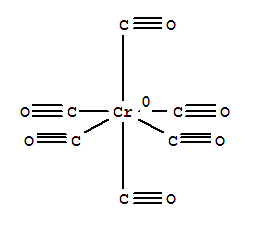Hazard T:Toxic;N:Dangerousfortheenvironment;
Risk R20/21/22;R43;R44;R49;R50/53
Safety
Confirmed carcinogen with experimental tumorigenic data. Poison by ingestion and intravenous routes. Mutation data reported. Explodes at 210°C. See also CHROMIUM COMPOUNDS and CARBONYLS.
Analytical Methods:
|
For occupational chemical analysis use NIOSH: Chromium Hexavalent 7024.
Hazard Codes:
F: Flammable
.gif)
N: Dangerous for the environment
.gif)
Risk Statements about Hexacarbonylchromium (13007-92-6):
R49 May cause cancer by inhalation.
R20/21/22 Harmful by inhalation, in contact with skin and if swallowed.
R43 May cause sensitization by skin contact.
R44 Risk of explosion if heated under confinement.
R50/53 Very toxic to aquatic organisms, may cause long-term adverse effects in the aquatic environment.
Safety Statements about Hexacarbonylchromium (13007-92-6):
S53 Avoid exposure - obtain special instructions before use.
S36/37 Wear suitable protective clothing and gloves.
S45 In case of accident or if you feel unwell, seek medical advice immediately (show the label where possible).
S60 This material and its container must be disposed of as hazardous waste.
Attention:
1. Storage: Store in a cool, dry, well-ventilated area away from incompatible substances. Store protected from light.
2. Handling: Wash thoroughly after handling. Use with adequate ventilation. Minimize dust generation and accumulation. Avoid contact with eyes, skin, and clothing. Keep container tightly closed. Avoid ingestion and inhalation. Store protected from light.
3. In common with many of the other homoleptic metal carbonyls (e.g. nickel carbonyl and iron carbonyl), chromium hexacarbonyl is toxic and thought to be carcinogenic. Its vapor pressure is relatively high for a metal complex, 1 mm Hg ( 36 °C).
HS Code 29310095

